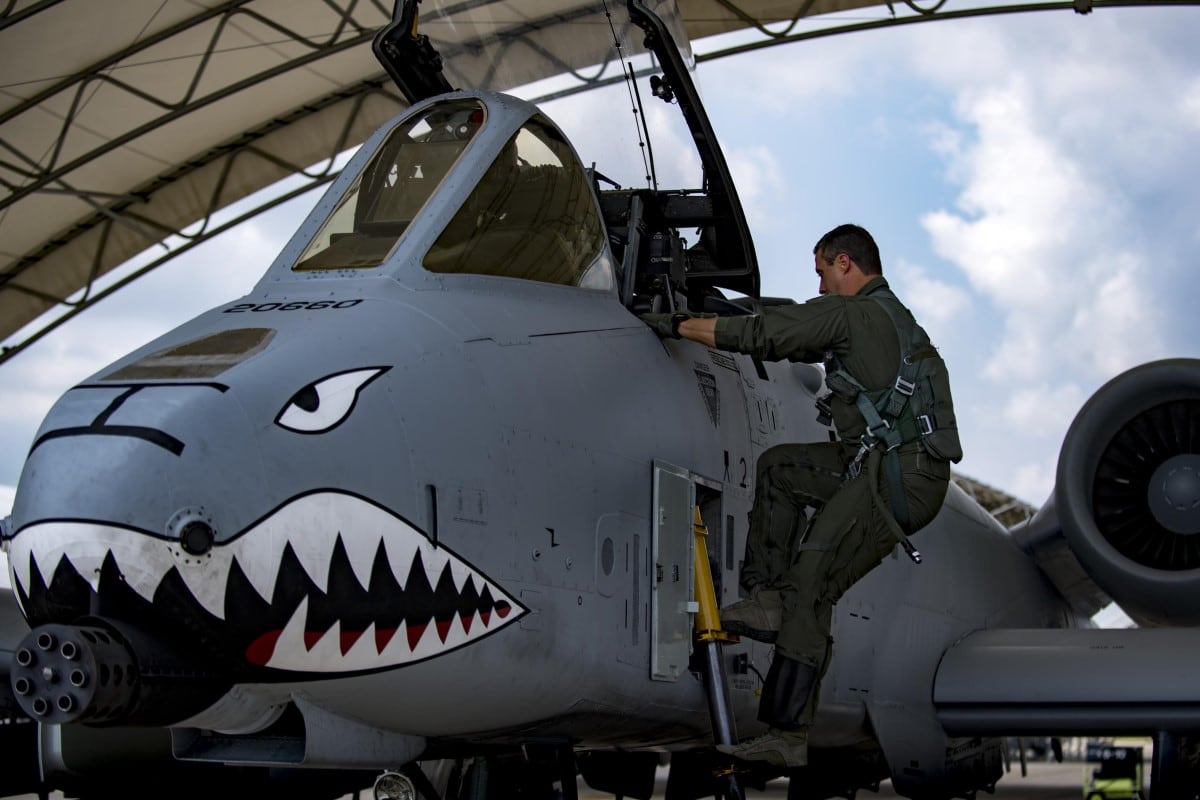The Air Force said Monday that it has finished installing new wings on the last of 173 A-10 Thunderbolt IIs.
The re-winging of the venerable attack aircraft, popularly known as the Warthog, is expected to allow it to keep flying until the late 2030s, Air Force Materiel Command said in a release.
The upgraded wings should last for up to 10,000 flight hours without requiring a depot inspection, AFMC said. And they have an improved, newly designed wire harness to make the wings easier to remove, and lessen the chance of damaging the wing during the removal process.
These aircraft account for about 61 percent of the Air Force’s roughly 282 Warthogs. Boeing received a $1.1 billion contract in 2007 to build replacement wings at its Macon, Georgia, plant, and work began in 2011.
The 571st Aircraft Maintenance Squadron at the Ogden Air Logistics Complex at Hill Air Force Base in Utah handled re-winging for 162 A-10s, the bulk of the project. The final A-10 was also re-winged at Ogden.
Osan Air Base in South Korea replaced the wings for the other 11 aircraft.
RELATED

AFMC said that upgrading the four-decade-old aircraft proved tricky at times. The Air Force had to pull spare A-10 parts up from the 309th Aerospace Maintenance and Regeneration Group at Davis-Monthan Air Force Base in Arizona, also known as the Boneyard. New parts for the plane’s fuselage also had to be created.
“At the end of the program, making sure we had all the pieces and parts that we needed to make that happen required a really significant team effort,” Stephen Zaiser, director of the 571st, said in the release. “I think the fact that we produced the aircraft so successfully is a testament to the whole team, the special program office, Boeing and others that were a part of making it all work.”
AFMC said that Lt. Col. Ryan Richardson, commander of the 514th Flight Test Squadron and an A-10 test pilot, flew the last A-10 to be re-winged on July 25 and declared it airworthy. That A-10 was from Moody Air Force Base in Georgia.
“It flew great and passed all the [functional check flight] checks,” Richardson said. “It’s unusual to have an airplane in production for as long as this one was and have it come out and fly as well as this one did.”
The A-10 has had a bumpy ride in recent years, and at one point its future appeared in doubt. The Air Force sought to retire the A-10 around 2015 as it dealt with tight budgets and prepared to bring on the F-35, which needed crucial maintenance personnel and other resources. Some A-10 supporters also said the Air Force was no longer interested in its close-air support mission, but former Chief of Staff Gen. Mark Welsh strongly denied that claim.
But the pugnacious aircraft’s fearsome firepower, shark-toothed visage, and successful track record saving ground troops time and time again has earned it a fervent fan base. The Warthog’s signature BRRRTTTTT sound from its 30mm GAU-8/A cannon became a rallying cry of sorts, sparking countless memes and fan videos.
Stephen Losey is the air warfare reporter for Defense News. He previously covered leadership and personnel issues at Air Force Times, and the Pentagon, special operations and air warfare at Military.com. He has traveled to the Middle East to cover U.S. Air Force operations.





